Giants in America; Hidden History of the Susquehannock; Who founded Washington DC
Howdy ya’ll. Let’s take a step back into the most important lost histories of America, focusing on the Susquehannock Indigenous People of the Susquehanna River and beyond. For hundreds of years they dominated the landscapes of Maryland, Virginia, New York, Pennsylvania, and even Washington D.C. We will weigh fact against theory, knowing that all of the current narrative is based on accounts at least 250 years old, as we are told the last of the Susquehannock were lost in 1763. Yet, the profound impact the Susquehannock had on American History is immeasurable. Furthermore, it appears their history has been purposefully compartmentalized. Why would this occur? That is the question we will look to answer today. We will also examine the King and Queen’s Seat in Rocks State Park, Maryland – a location that played a significant role to the Susquehannock (which I visited recently).

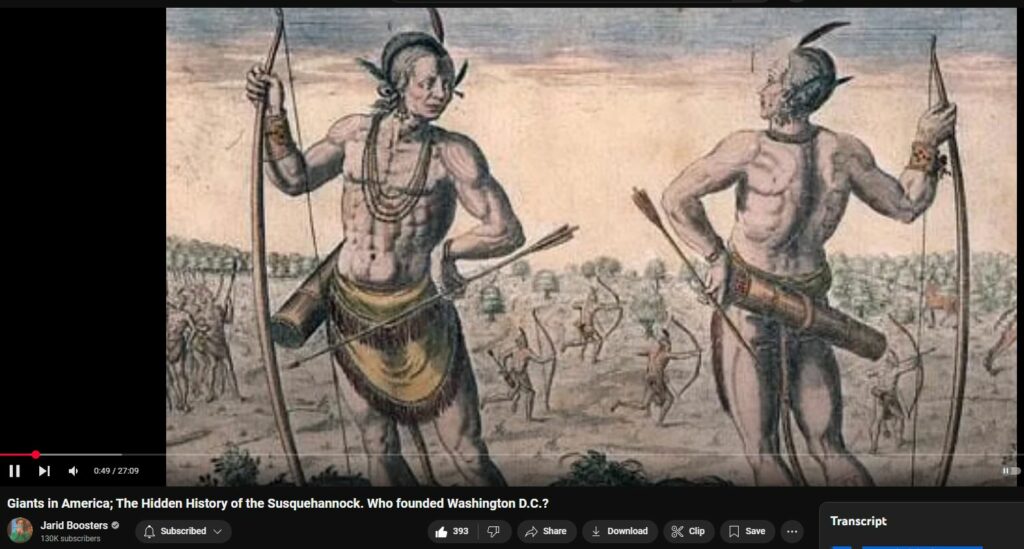
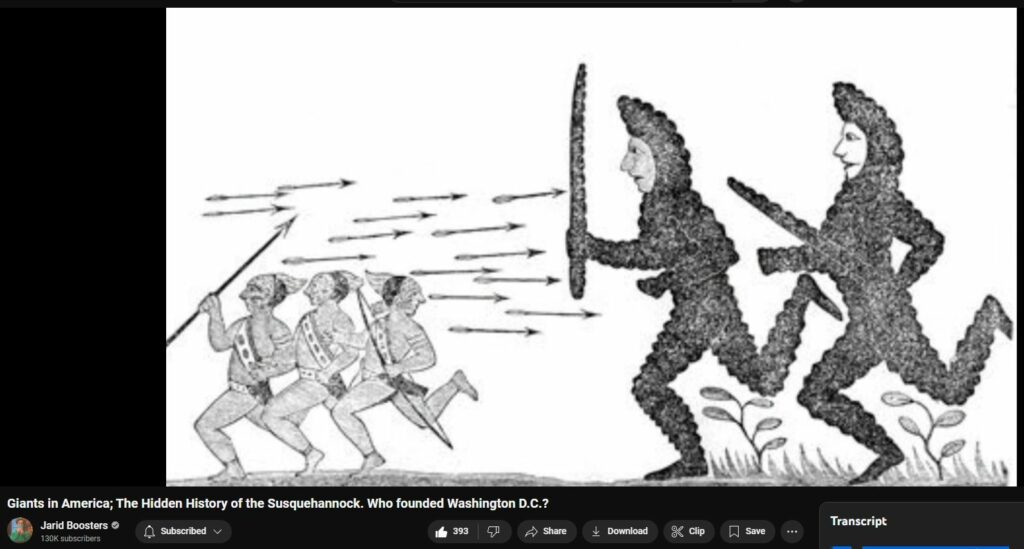

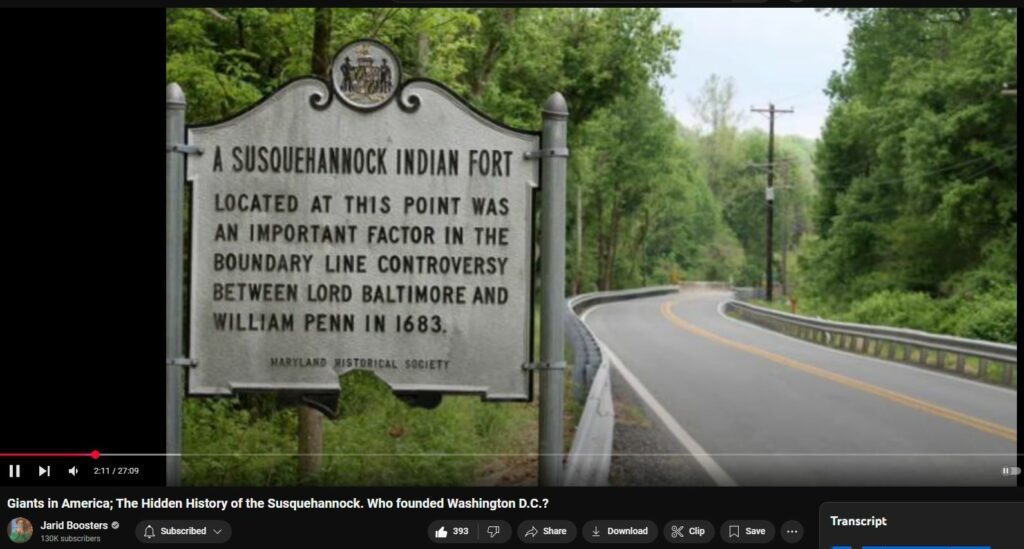
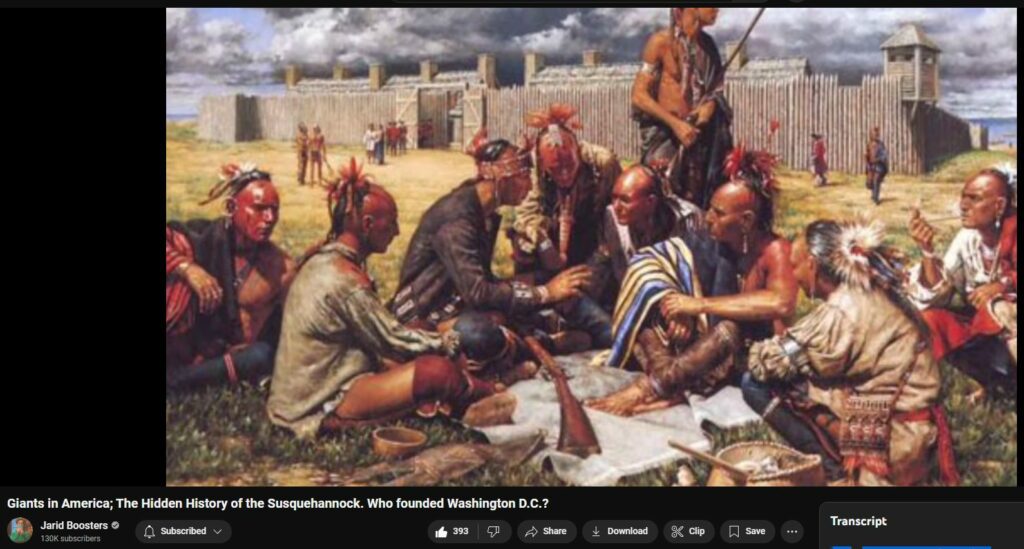
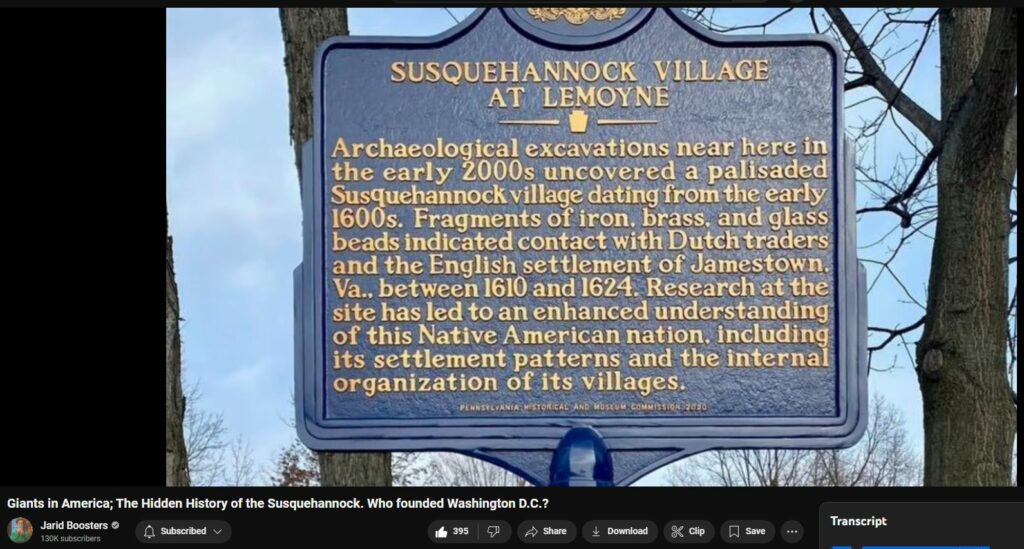
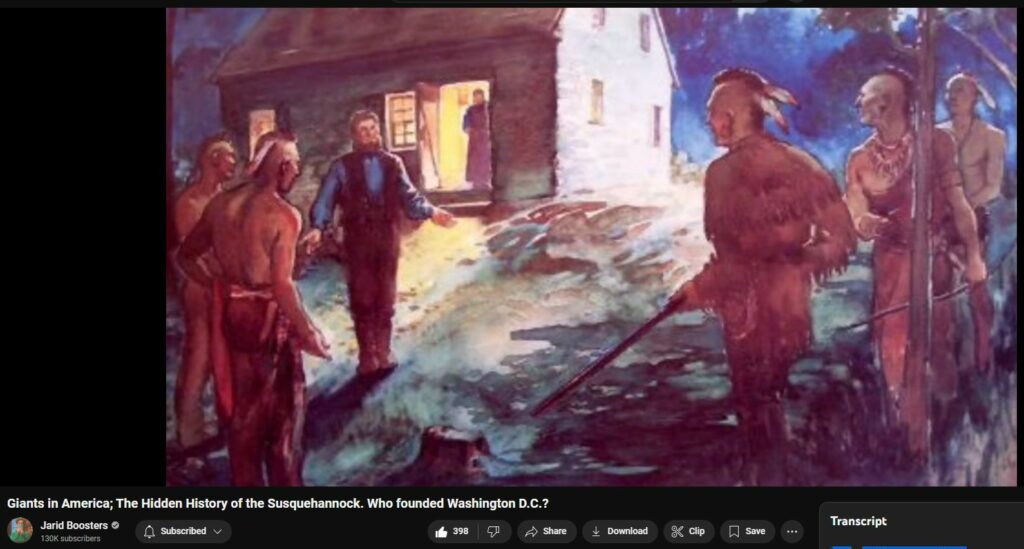
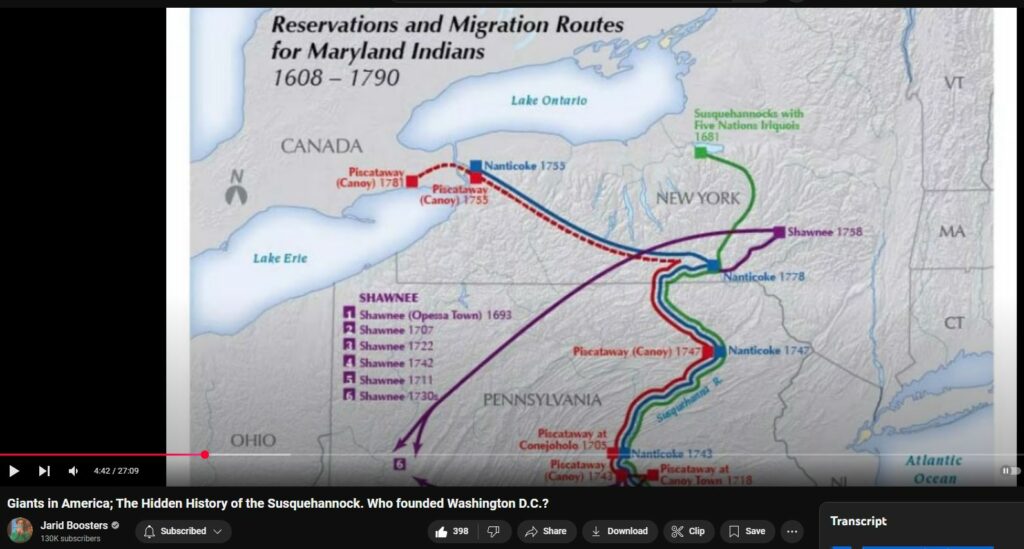
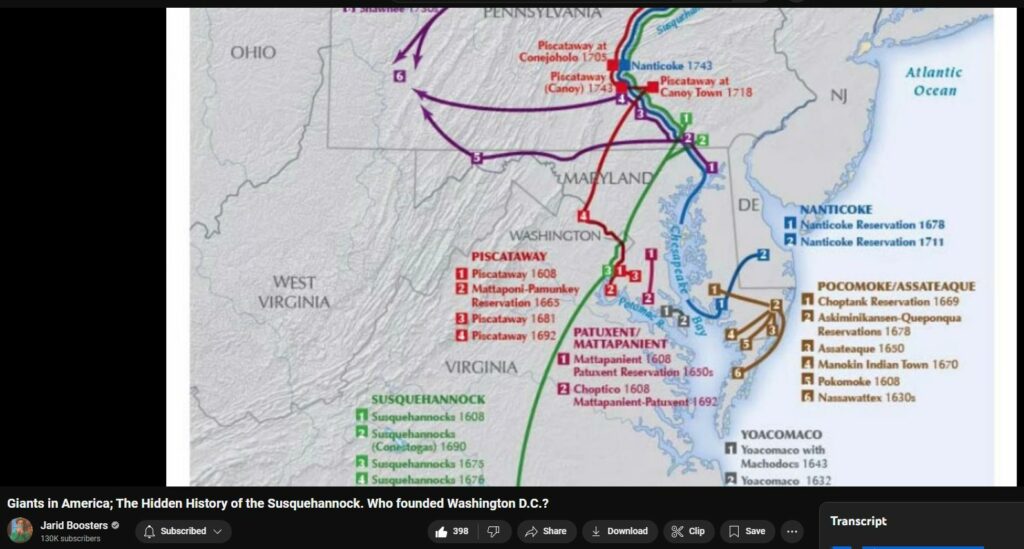
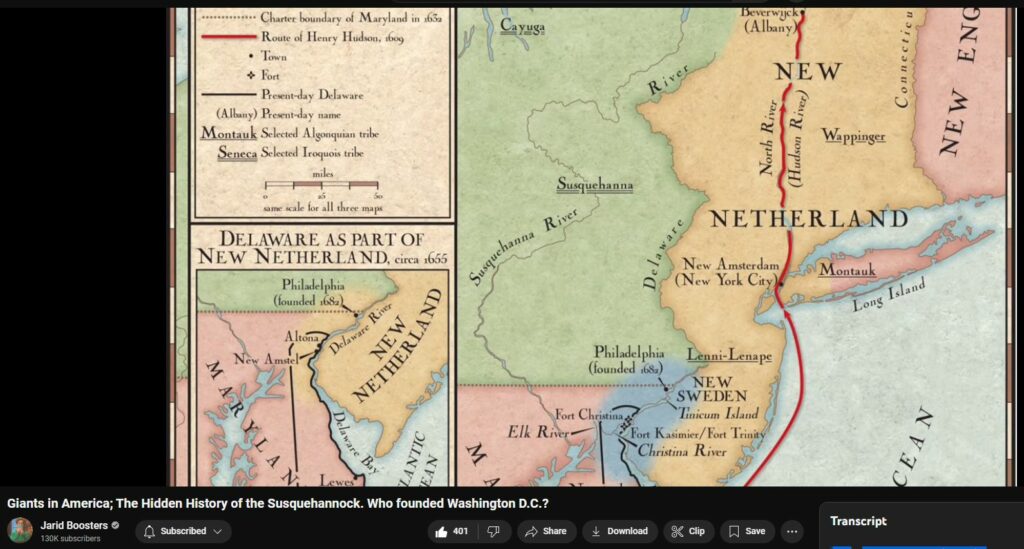
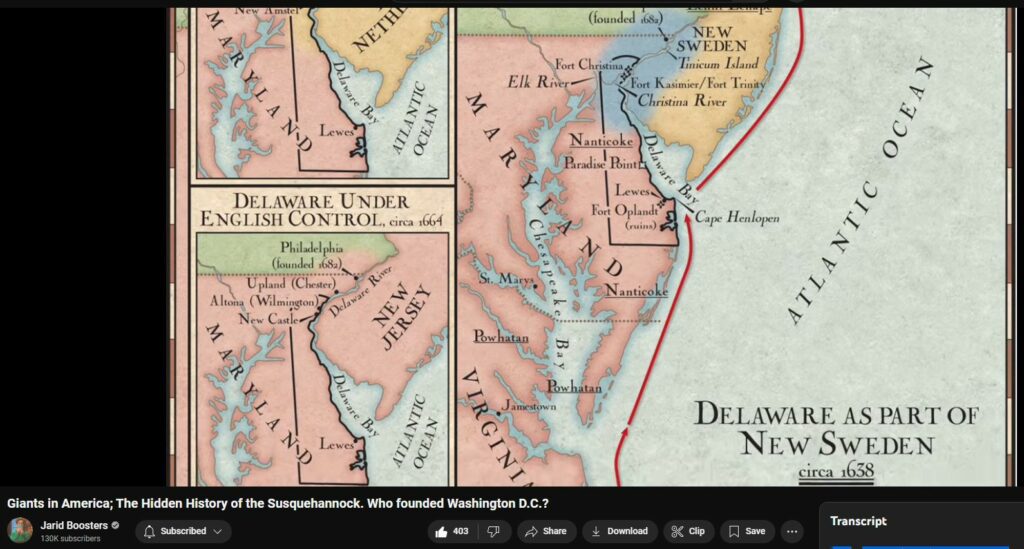
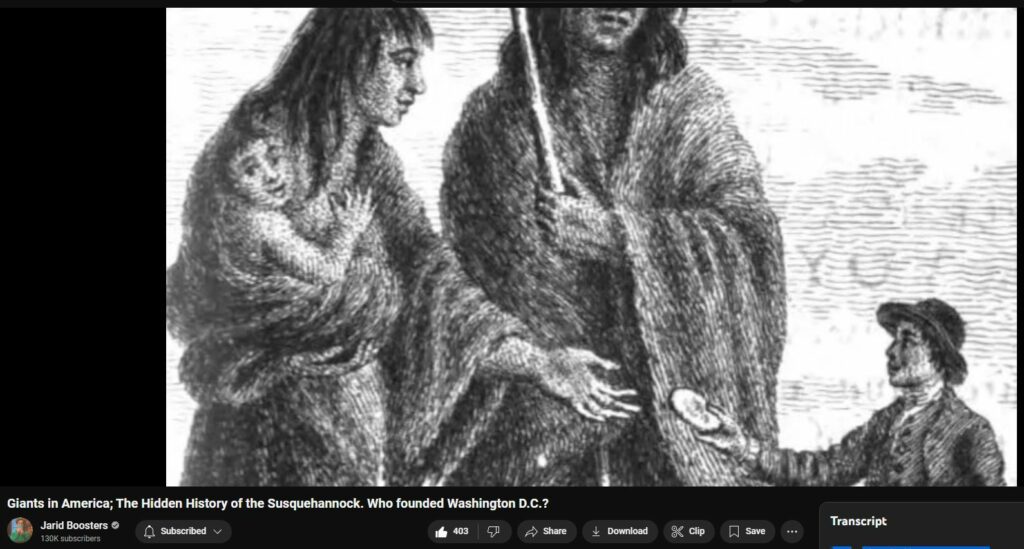
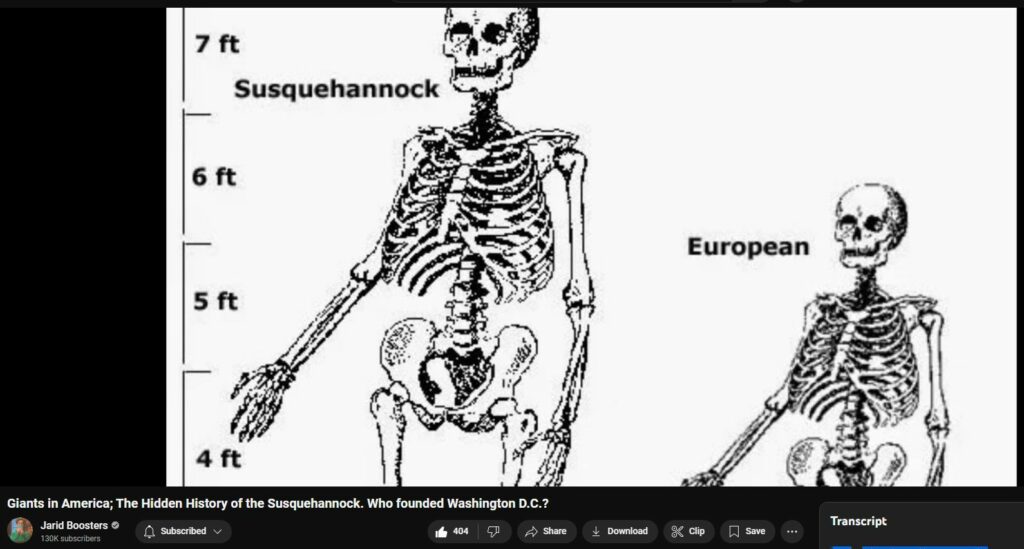
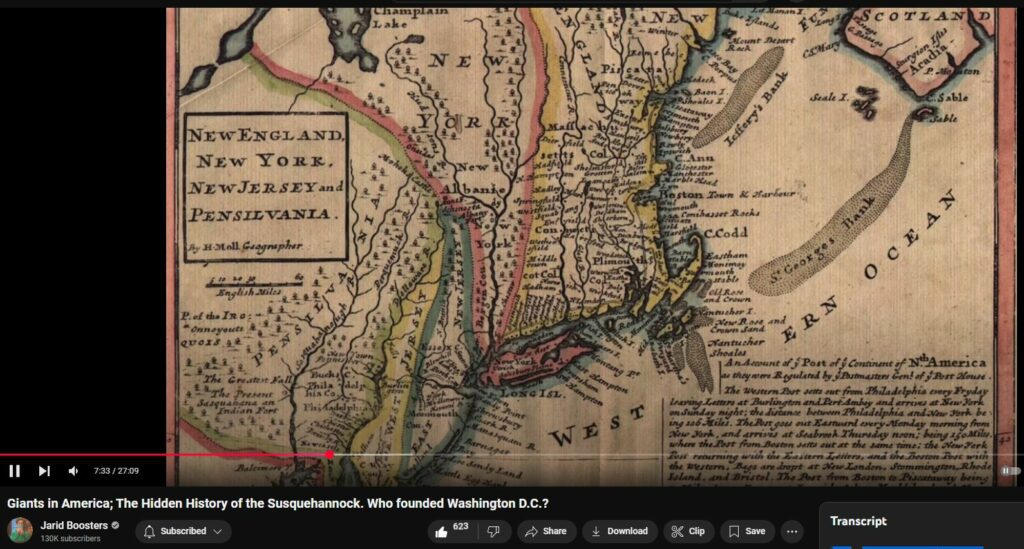
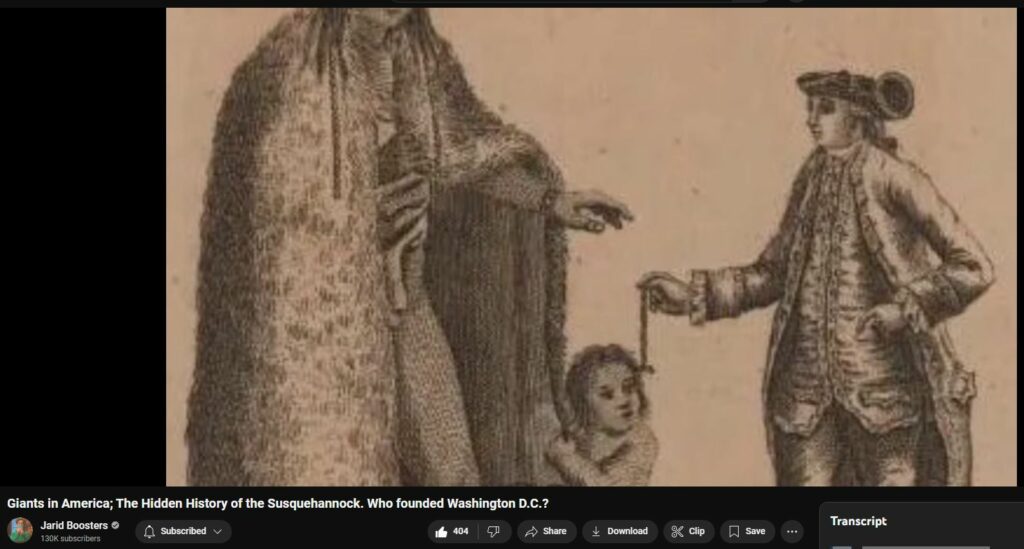
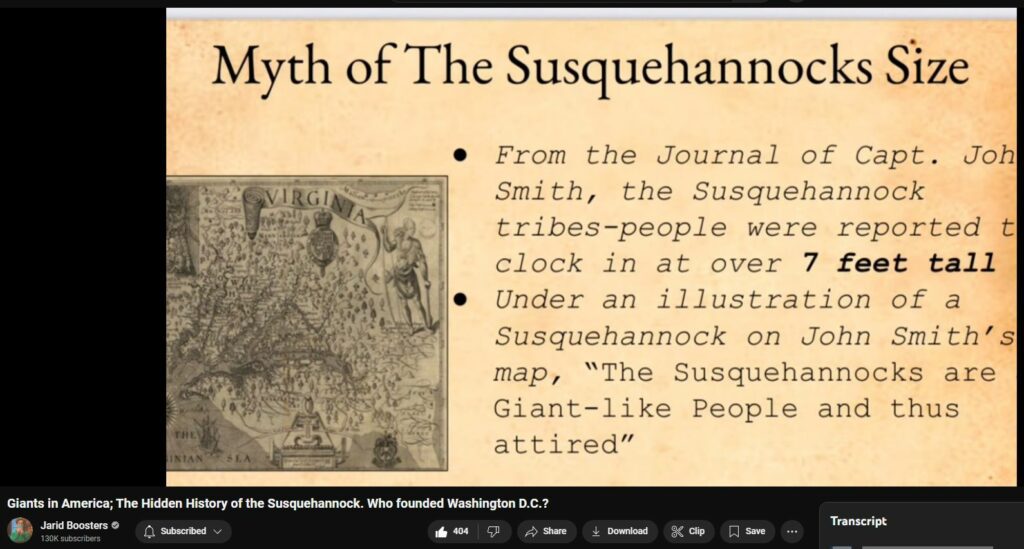
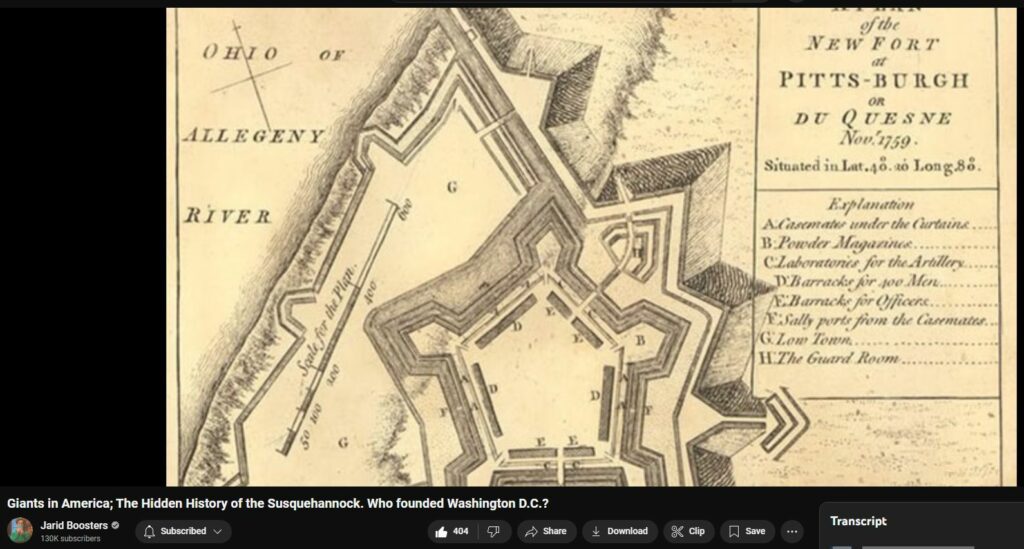

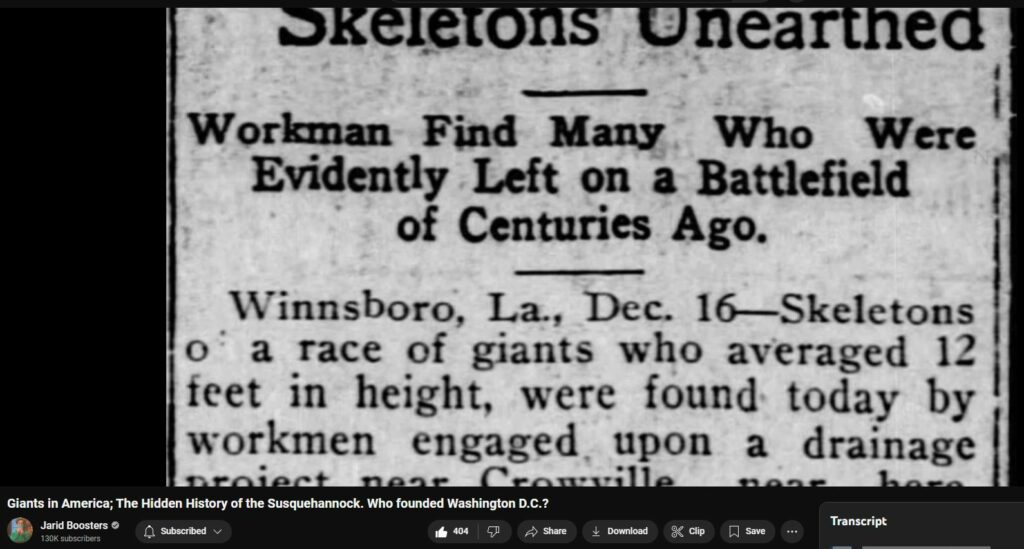
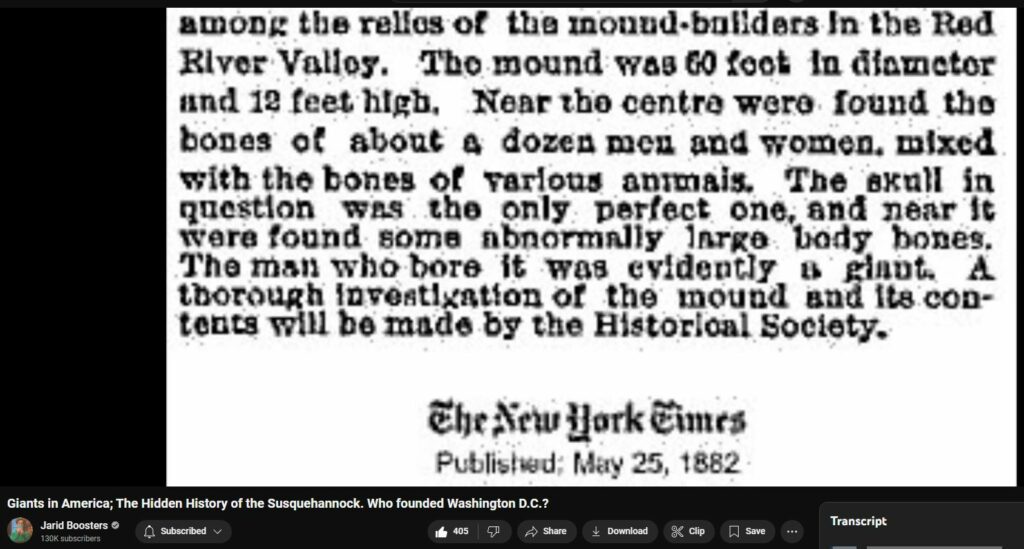
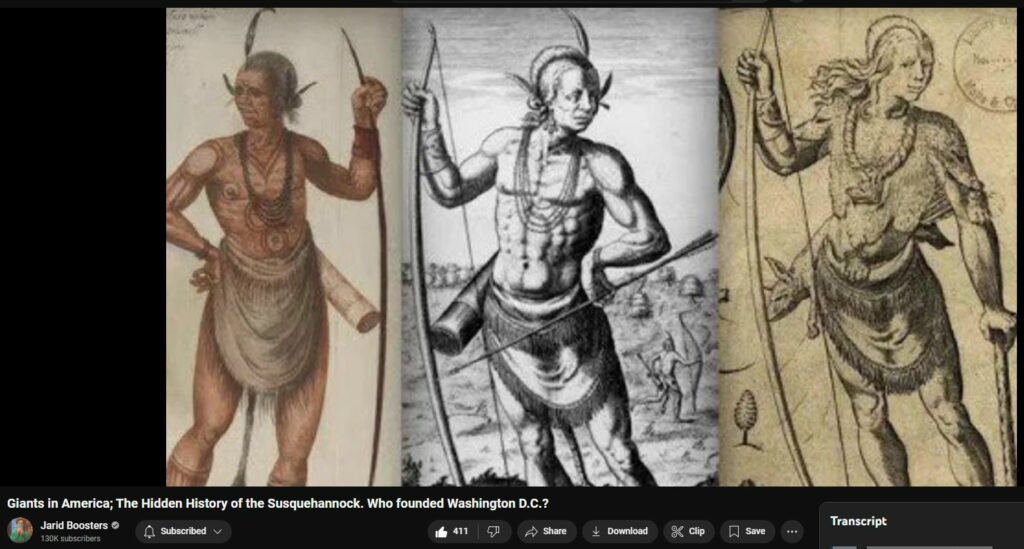
Transcript
0:03
howdy y'all Welcome back Thank you for
0:05
being here First and foremost I wanted
0:08
to say thank you so much for helping my
0:10
channel to reach 130,000 subscribers
0:14
2025 has been a difficult year so far to
0:18
say the least But luckily we have
0:20
endless oldworld research to keep our
0:22
minds firing on all cylinders One of the
0:25
most fascinating and at times
0:27
questionable narratives in our
0:28
historical timeline would have to be
0:30
that of the Susu Hanok indigenous people
0:33
For centuries the Susu Hanok reigned
0:36
over much of what is today New York
0:39
Maryland Pennsylvania and even
0:41
Washington DC And yet by the early 20th
0:44
century this distinguished group of
0:47
indigenous people was declared extinct
0:49
by the government of Pennsylvania Indeed
0:52
it was on Pennian soil in which the last
0:55
congregation of Susu Hanok had organized
0:58
and this occurred in my hometown of
0:59
Lancaster However to fully understand
1:02
the magnitude of the Susuhan people I'd
1:05
like to first paint a vivid picture of
1:07
their culture society and the
1:10
architecture that was attributed to them
1:12
According to the currently accepted
1:14
narrative the Susuanok began their
1:17
history with the onset of the little ice
1:19
age around the year 1450 This forced the
1:23
Susuanok further south They traveled
1:26
along the massive river on which they
1:28
had constructed their settlements now
1:30
aptly known as the Susuana River Here is
1:34
where we start to realize the sheer
1:36
magnitude of what we are discussing The
1:39
Susuana River is one of the oldest
1:42
existing rivers in the entire world and
1:45
possibly the oldest in America being
1:47
formed roughly 330 million years ago For
1:52
example the Susuana is far older than
1:55
the mountain ridges through which it
1:57
runs And from roughly 252 million years
2:00
ago through 66 million years ago the
2:03
Susuana River was unimaginably wide
2:06
covering most of the flat tidelands of
2:08
eastern North America So to say there's
2:11
some history hidden here is an
2:13
understatement And whether you agree
2:15
with the current narrative or not you
2:17
have to admit there must be some
2:19
significance to what might possibly be
2:22
the oldest and at one time the widest
2:25
river in America
2:27
Now back to the history of the Susuanak
2:30
When they began to travel south around
2:32
the year 1450 they left from roughly an
2:35
area known then as Tyogga Point Meaning
2:38
this location was said to be at that
2:41
time one of their largest original
2:43
settlements And remarkably Tyogga Point
2:46
has since been renamed and is now known
2:49
as Athens Coincidence or oldw world
2:52
symbolism
2:54
to illustrate the extent and advancement
2:56
of their kingdom the Suscuhan were said
2:59
to have constructed a massive earthwork
3:02
and palisated fortification in Lancaster
3:04
County along the Suscuana River by the
3:07
year 1500 By 1600 this site was said to
3:11
have been overcrowded and the Suscuan
3:14
then extended what was their capital
3:16
city to reach the Washington burrow of
3:19
Pennsylvania The name Washington becomes
3:22
important elsewhere in this narrative As
3:24
we are told
3:25
by605 the Suscuhan had also extended
3:29
their interconnected settlements to
3:31
reach the Ptoac River Valley in what is
3:33
today Virginia Maryland and nearby to
3:37
the United States capital Washington DC
3:40
Now what's important here is that we're
3:42
told the Susuanok built fairly intricate
3:45
earthworks and then built palisades or
3:47
wooden walls on top to protect their
3:50
fortification If you know anything about
3:53
the earliest star forts that were
3:54
founded in America this is exactly what
3:57
they looked like Earthworks with wooden
4:00
palisades on top It truly wasn't until
4:03
the establishment of vast trade routes
4:05
in America that we begin to see the more
4:09
Europeanlooking star forts being founded
4:11
here What ties this further to the
4:14
Susuano is their first encounter with a
4:17
European settler was said to have
4:19
occurred in the
4:20
year608 with an interaction with
4:23
infamous explorer John Smith who had
4:25
made his way into the Chesapeake Bay
4:28
Again if you are unfamiliar the
4:31
Chesapeake Bay is one of the most
4:33
gorgeous and mysterious bodies of water
4:35
in the world From its earliest recorded
4:39
history it was said to have been in the
4:41
control of the Susuana as the Chesapeake
4:44
Bay is the end of the
4:47
444 mile long Susuana River The entire
4:50
length of the river was written by John
4:53
Smith to be controlled solely by the
4:55
Susuhan with massive earthwork palisated
4:59
fortifications dotted along the length
5:01
of the river Smith also wrote that the
5:04
Susuanok were remarkably pale with dark
5:08
hair and light colored eyes and they
5:10
stood a full head taller than their
5:12
European counterparts estimated to be 6
5:15
and 1/2 to 7 ft tall And this was not
5:18
just one of the Susu Hano that were this
5:21
tall but a group of 60 of them were said
5:24
to have welcomed Smith upon his arrival
5:27
to the Chesapeake Bay Again the Susu
5:30
Hanoch even in this current narrative
5:32
sound much different than any other
5:35
indigenous American group we have
5:37
researched before What makes this
5:39
interaction with John Smith even more
5:42
notable is that Smith also wrote that
5:45
the Suscuhan were in possession of
5:47
advanced weaponry made of brass
5:49
including what appeared to be cannons
5:52
which he could only assume were French
5:54
in origin However it's interesting we
5:57
don't have any described interaction
6:00
between the French and the Susu Hanoch
6:03
before this time which you'd think the
6:05
French would have wrote about given the
6:07
Susu Hanok's rather unique history and
6:11
appearance The narrative continues by
6:14
telling us that the Susu Hanok ruled
6:16
over nearly all fur trade in the region
6:19
trading with the English the Dutch and
6:21
the Swedish and obtaining musketss When
6:24
the Suscuhan marched through Lape
6:26
territory on a trade excursion and were
6:29
challenged in the mid 1630s the Suscuhan
6:32
were said to have won a decisive battle
6:35
leading to years of the Lape being
6:37
subjects to and paying tribute to the
6:40
Susuan With the founding of the province
6:43
of Maryland in 1634 Britain essentially
6:46
declared war on the Susuan further
6:49
heightened by the province and Britain
6:51
aligning with the Piscatoaway tribe
6:53
another whom had been forced to pay
6:55
tribute to the Suscuhan for many years
6:58
With their British trade routes broken
7:01
the Susuhan turned to New Sweden And
7:04
would you believe it an earthwork a
7:06
palisadated star fort was created in New
7:09
Sweden named Fort
7:11
Christianana While looking exactly like
7:14
the described Susu Hanok forts and while
7:17
being built to facilitate fur trade with
7:19
the Susu Hanok and while we're told the
7:22
Susu Hano were skilled architects
7:25
employed by colonists to establish new
7:27
settlements nowhere in the current
7:30
narrative does it say that the star fort
7:33
fort Christianana was built by the
7:36
Susuana It just makes you think
7:39
Furthermore given the significance of
7:42
the Susuana River to all of American
7:45
history a theory arose in the early 17th
7:48
century which still persists to this day
7:51
A theory that the Susu Hanoch are
7:54
descendants of the mound builders If
7:57
you're unfamiliar prior to the
7:59
previously mentioned Little Ice Age a
8:02
widespread group of related indigenous
8:04
people established massive earthworks
8:07
earth effiges settlements and cities
8:10
across the Midwestern United States
8:13
between roughly the years 500 AD to,400
8:17
AD And yet for as long as these groups
8:20
reigned supreme in America they
8:23
disappeared seemingly without a trace
8:25
before the arrival of European settlers
8:28
Many question this history and the
8:30
established timeline for the mound
8:32
builders and some have theorized the
8:35
earthworks of America are far older than
8:38
what is currently accepted with some
8:40
claiming them to be anti-dolivian
8:43
Still others claim that the old world
8:46
was not so long ago and that residue of
8:48
the mound builders maybe even the people
8:51
themselves still existed when the first
8:53
Europeans stepped foot onto this
8:56
landscape One thing we do know is that
8:59
often these mounds signified locations
9:02
that had been established along ancient
9:04
routes And in many instances these
9:07
earthwork settlements were then
9:08
transformed into some of the first forts
9:11
and European towns in America For
9:14
example Pittsburgh was the site of
9:17
numerous mound builder effiges and then
9:20
became one of the most important store
9:22
forts in pre-revolutionary America
9:25
before then becoming one of the largest
9:28
cities in the country during the
9:30
industrial age Not only did these
9:32
earthworks play a significant role to
9:35
shaping America but these epic pieces of
9:38
shaped land and architecture also
9:40
greatly resembled the palisated
9:42
settlements of the
9:45
Suscuana Given that fact and the odd yet
9:48
almost never discussed fact that many of
9:51
the mound builders burial mounds found
9:53
across the country contain skeletons
9:56
that stood well over 7 ft tall and tying
9:59
that to the descriptions of the Susuan
10:01
of a similar build And given these
10:04
remains in the burial mounds have often
10:06
been described as having light colored
10:08
eyes and hair and seeing how many other
10:11
indigenous groups appeared to venerate
10:13
the Susuan we can only begin to imagine
10:17
the implications it would have if the
10:19
Susu Hanok truly did descend from the
10:23
mounduilders Which leads to 1643
10:26
This is when the British Jesuit order
10:29
formed a massive mission to try to
10:32
convert the Susuano and if not then to
10:35
try to conquer them As you can imagine
10:38
this did not go as planned The governor
10:41
of Maryland went as far as to hiring
10:44
militias but it was to no avail The Susu
10:47
Hanoch were said to have won nearly
10:50
every battle that they took part in
10:52
capturing multiple British cannons and
10:54
burning through numerous British
10:56
settlements The Suscuhan continued these
10:59
raids well into the year
11:02
1652 when the Mohawk were then armed by
11:04
the British and sent to destroy the
11:07
Suscuhan Again this aggression was
11:10
easily repelled but the Susuhan then
11:13
chose to sign the Articles of Peace and
11:15
Friendship to reestablish trade with the
11:18
British and to facilitate further
11:20
accommodations for the Susuan It is
11:22
around this time that the Susu Hanok
11:25
began to be involved in the construction
11:28
of early settlements in Maryland for the
11:30
colonists again showing their affinity
11:32
for architecture By the year 1660 the
11:36
Susu Hanok are described as quote the
11:39
security of the northern part of the
11:41
province end quote And that comes from
11:44
official Maryland documents Those
11:46
Jesuits however really seemed interested
11:49
in the Suscoan And with good reason In
11:53
1671 the Jesuit report lists a raid of
11:57
800 Senica warriors on what they
12:00
believed to be an unoccupied major Susu
12:03
Hanok settlement on the Chesapeake Bay
12:06
When the Senica arrived to the Susuhan
12:08
settlement they were correct as nearly
12:11
no adult male men remained in the
12:14
village And yet the Senica were met by a
12:17
conglomerate of 300 Susuanok mostly
12:21
adolescent boys no older than the age of
12:25
14 In the ensuing battle it is written
12:28
that the 300 Susquan boys not only
12:32
routed the 800 Senica warriors but the
12:35
300 Suscuhan boys were also said to have
12:38
been the same size if not taller than
12:40
the adult Senica men Just a little more
12:43
food for thought in this narrative As
12:46
for roughly 200 years of European
12:49
history in America the Susu Hanoch
12:52
appeared to be unconquerable That is
12:55
until the trickery and rewriting of the
12:58
narrative
13:00
History tells us that this group the
13:03
Suscuana that was undefeated in major
13:06
battles until roughly 1671 who ruled
13:09
over the majority of what became three
13:12
different states The narrative tells us
13:15
that by
13:16
1675 the Susay Hanoch were easily
13:19
defeated by the Irakcoy and forced to
13:22
leave their capital in Pennsylvania to
13:24
move towards Washington DC Luckily even
13:28
in the current narrative we have modern
13:30
scholars that are calling malarkey on
13:33
that one More likely it's argued that
13:36
Charles Calv the governor of the
13:39
Maryland province promised certain trade
13:41
amenities and gifts to the Susu Hanok as
13:44
well as arms and protection if they
13:46
moved into his province and built a new
13:49
colony We could even take this a step
13:52
further and see how Washington DC and
13:55
the surrounding area was largely
13:57
unoccupied and undeveloped at this time
14:01
It was still an unknown That is until
14:03
the Susu Hanok moved into the area in
14:07
1675 establishing the first trade routes
14:10
earthworks and palisated forts on the
14:13
same location that would become the
14:15
United States capital over 100 years
14:18
later Then we have a very strange event
14:21
It is largely believed that colonists
14:24
either orchestrated raids themselves or
14:27
hired other indigenous groups to conduct
14:29
raids on newly founded European
14:32
settlements nearby the new Susu Hanok
14:35
capital in Maryland The Susu Hanok were
14:38
then quickly blamed for these raids and
14:40
a 1,000man militia was organized to
14:43
eliminate the Susu Hano from the area
14:46
It's almost as if the colonists hired
14:49
the Susu Hanok to clear out Washington
14:51
DC and the surrounding area to establish
14:54
trade routes and settlements to help
14:56
construct roads and structures and then
14:59
to kick them out of the region before
15:01
taking it over But I digress The siege
15:04
of the Susu Hanok fort was said to have
15:07
lasted for over 6 weeks Does it really
15:11
make sense that a simple earthwork and
15:14
wood palisadated fort would take six
15:16
weeks to penetrate or could it be that
15:19
the Susu Hanok had constructed far more
15:22
advanced structures than they are given
15:24
credit for in the current narrative and
15:27
these feats of indigenous engineering
15:30
were deemed to be quite difficult for
15:32
the Europeans to conquer We're told the
15:35
Susu Hanok escaped in the middle of the
15:37
night in early winter with a large
15:40
portion of their people giving up their
15:43
identities and assimilating with the
15:45
nearby Lape An estimated 60 to 90% of
15:50
the Susuan assimilated with other
15:53
indigenous people during this time as
15:56
the governments of both Virginia and
15:59
Maryland had declared war on them
16:01
However the remaining 10 to 40% of the
16:05
Susuana people returned to the Suscuana
16:08
River to their original homeland in
16:11
Lancaster where the Pennsylvania
16:13
government was willing to give them a
16:15
sanctuary a safe home to protect the
16:18
last of their people Or so they thought
16:22
By
16:23
1681 the Susu Hano had established
16:26
Konesoga town in Lancaster Pennsylvania
16:30
along the Knesogga River a major
16:32
tributary of the Susuana which cuts
16:35
through the land to create the
16:37
boundaries for the county of Lancaster
16:40
The history of Knesogga town is pretty
16:43
remarkable First Kanes Stoogga is the
16:46
British word for Susuana And from that
16:49
name Knesogga derives the term Stogi
16:52
being the colloquial term for the cigar
16:55
a creation that was first introduced to
16:58
European settlers by the
17:00
Susuana In the Knesogga town we also
17:03
have the inventing or founding of the
17:06
Knosogga wagon the wagon that was said
17:08
to have conquered the West We also have
17:11
the invention of the first repeating
17:13
rifle occurring in the Knesogga town
17:16
Formerly known as a Knosoga or Lancaster
17:19
but now known as a Kentucky rifle
17:22
Knesogga Town became the trade hub of
17:25
all of Pennsylvania outside of
17:27
Philadelphia And Lancaster grew to one
17:30
of the largest cities in all of America
17:33
However as many groups began to
17:36
assimilate in the Knesogga town the
17:39
ancient customs became lost Only a few
17:42
pureblooded Susuanok remained and among
17:45
them only a few elders could speak the
17:48
Susuanok language which was known to
17:51
them as the ancient tongue By
17:54
1763 we're told everyone but the ancient
17:57
Susu Hanok speakers had left the
18:00
Konosoga town And these few remaining
18:02
individuals numbering around 20 or less
18:06
were the last to keep the ancient
18:08
customs alive Again take this all with a
18:11
grain of salt but we're told a radical
18:14
group known as the Paxton Boys formed in
18:17
Pennsylvania looking to erase indigenous
18:20
history and to claim indigenous lands
18:22
This group marched to the Knesogga town
18:25
in the middle of the night and the
18:27
ensuing decimation saw every last
18:29
Susuanok lose their lives From this
18:32
point forward the Suscuhan were
18:35
considered all but extinct and this was
18:37
actually made law in
18:40
1941 A bill was proposed to protect
18:43
descendants of Susuanok people and
18:46
provide them with protected land in
18:48
Dolphin County Pennsylvania However even
18:51
though the bill was passed it was
18:53
immediately vetoed by the governor of
18:56
Pennsylvania Arthur James who used court
18:59
documents to claim that the last of the
19:01
Susu Hanoch had died due to the Paxton
19:04
boys attack in 1763
19:07
The Saskuahua Hanoch have never been
19:09
brought up again in a governmental
19:12
capacity since that time period And
19:14
their purposeful erasing from our
19:16
history is what I feel could be one of
19:19
the biggest tragedies to have ever
19:21
occurred on American soil especially
19:24
when we consider the possibility that
19:26
the Susu Hanok were involved in
19:28
constructing some of our largest cities
19:30
including the American capital I want to
19:33
end this video by showing you my visit
19:36
to the king and queen seat in Maryland I
19:39
was out exploring looking for the second
19:42
largest waterfall in Maryland Kilgore
19:44
Falls And while in the forest on these
19:47
trails I found markers for a location
19:49
that was called the King and Queen Sea
19:52
So of course I had to visit This site
19:55
was actually said to have been where the
19:57
Susu Hanok would meet and hold
19:59
ceremonies and the king would climb to
20:02
the top of this stone throne and he
20:05
would make his speeches So I climbed to
20:07
the top of this 200 ft tall outcropping
20:11
This is also said to be the location
20:13
where in the
20:14
mid600s the Irakcoy after many years of
20:18
losing battles and paying tribute became
20:20
equals to the Susu Hanok when the
20:23
Irakcoy princess was married to the Susu
20:26
Hanok prince Hence the name of this site
20:29
the king and queen sea thus uniting the
20:32
tribes after centuries of waring
